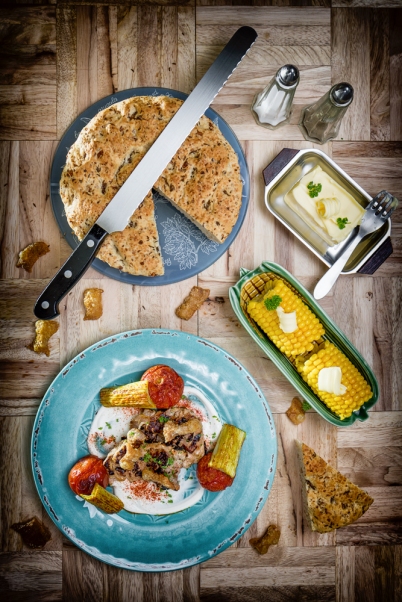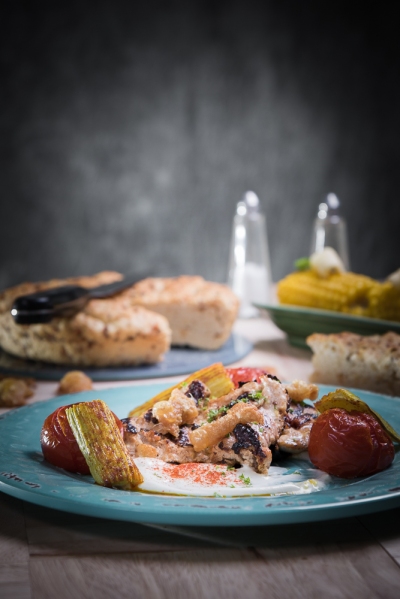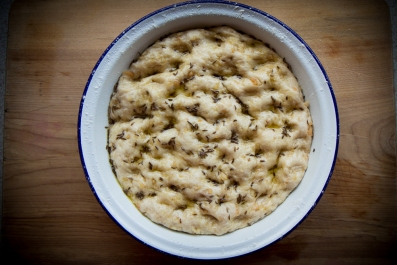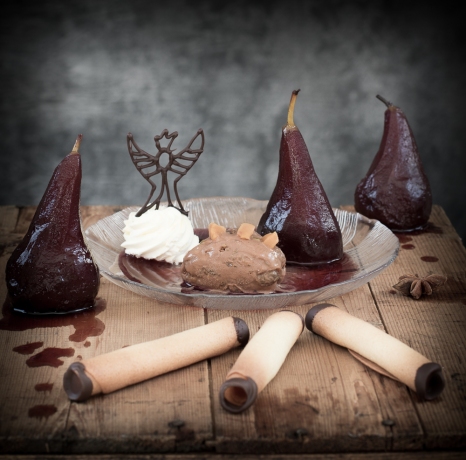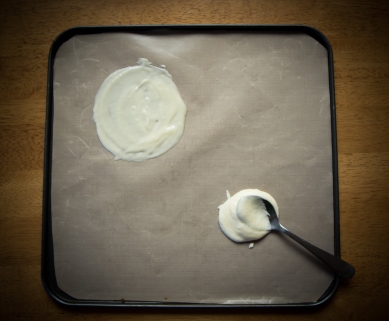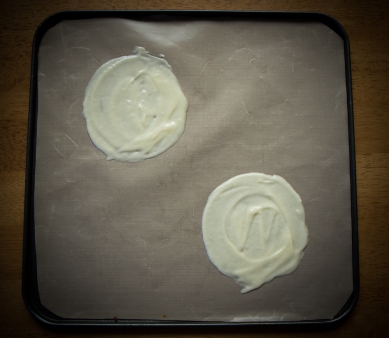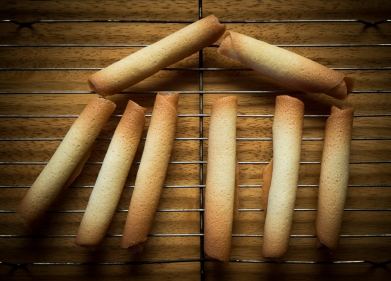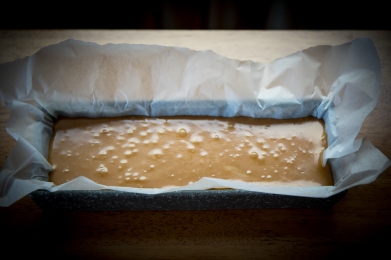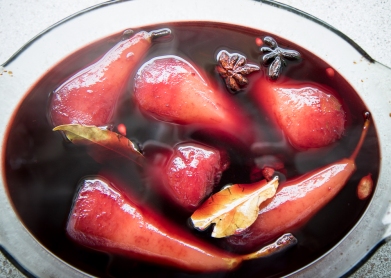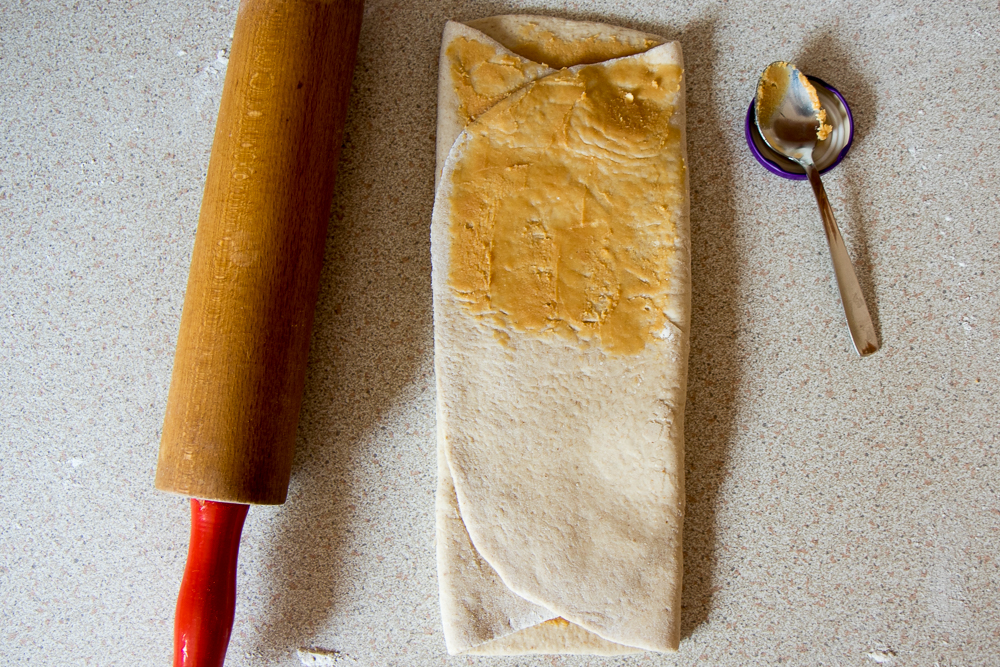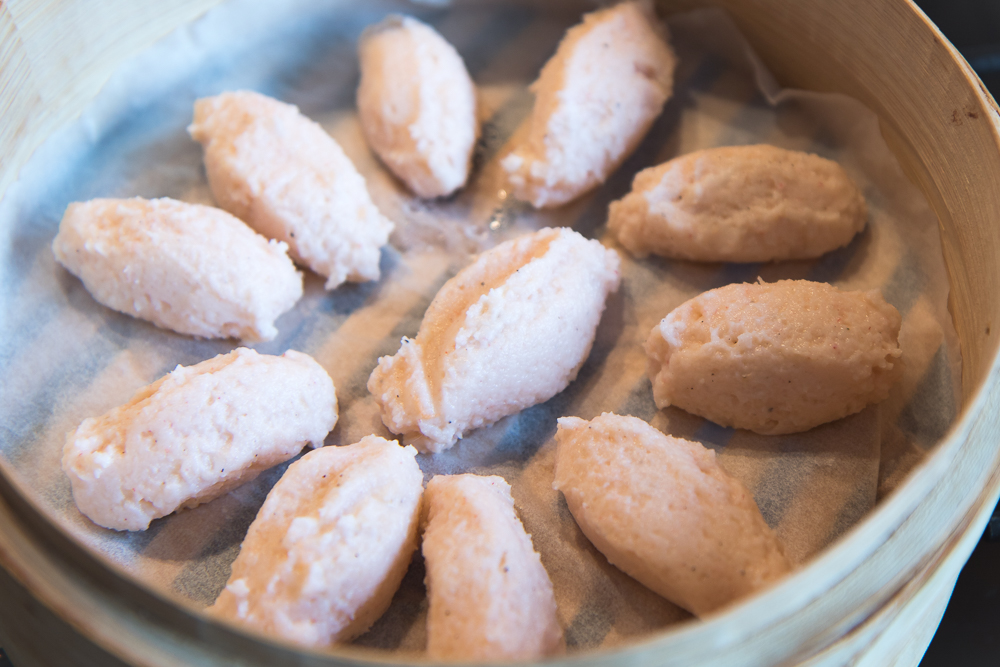
A rich, fruity pudding for the festive season. This ‘old flame’ pops up once a year and it’s well worth the wait. Don’t let the long list of ingredients put you off making your own luxury puddings. They’re very easy to make and can be steamed several days in advance and re-heated just before serving on Christmas day. These puddings actually taste better if cooked several days before serving and one less thing to think about on Christmas day.
Ingredients: Makes 8 individual 150ml puddings. Tip: Heatproof plastic pudding moulds are great to use, as the cooked puddings can be chilled and re-heated in the microwave. For the purpose of this recipe I have used both plastic and stainless steel moulds.
50g strong flour.
100g veg’ suet.
100g raisins.
100g sultanas.
50g mixed chopped peel. (See recipe below)
50g chopped dried apricots.
65g glacé cherries – halved. (Extra for garnish)
1/2 nutmeg – grated.
1 heaped tsp mixed spice.
100g soft dark brown sugar.
100g bread crumbs.
25g flaked almonds.
50ml milk.
2 eggs lightly whisked.
100ml brandy.
Juice of 1 orange. (save the peel)
Juice of 1 lemon. (save the peel)
2 dessert spoons of treacle.
Butter for greasing your dariole/pudding molds.
8 good teaspoons of treacle for the bottom of each mould.
Mixed Peel:
Peel from 1 orange
Peel from 1 lemon.
600ml water
2 dessert spoons of sugar.
1 bay leaf.
4 cardamon pods.
Garnish:
200g glacé cherries.
Strips/julienne of orange and lemon peel – use mixed peel recipe.
Brandy for flaming – 2 tabls for each pudding.
50g Fondant/easy roll icing. Roll out to 3mm thickness and cut out star shapes with a small star cutter.
Method/cook:
Pudding:
Combine all the dry ingredients – set aside.
Add the milk and eggs to the dry ingredients – mix.
Now add the brandy, lemon juice and orange juice – mix.
Finally, add the 2 dessert spoons of treacle and thoroughly combine.
Cover the pudding mix with cling film and store in the refrigerator for 48 hours.
Once the pudding mix has had the time to macerate it’s ready to cook.
Grease your 8 pudding moulds with butter.
Drizzle 1 good teaspoon of treacle into the bottom each mould, then drop in 3 glacé cherries. (see image)

Divide your pudding mix between the 8 moulds – approx 140g for each pudding. Note: Don’t overfill or pack the moulds – leave a centimeter from the top. (see image)

When all your moulds have been filled, top with a circle of parchment paper and fix in place with string or an elastic band. (see image)

Wrap each pudding in tin foil. (see image)

To steam the puddings: Pop your puddings into a large pan. Top up the pan with boiling water until it reaches half way up the sides of the moulds. Bring the water to a boil and immediately turn down to a simmer – pop on a lid.
Simmer the puddings for 50 mins’.
Mixed Peel: (I like to make my own as it uses up orange and lemon peel that would otherwise be discarded. Also, the strips of homemade peel look very attractive as a garnish and taste great with xmas’ puds’.)
Place all the ingredients into a pan.
Bring to a boil, pop on a lid and simmer for 40 mins’.
After 40 mins’ drain the peel and chill.
Chop 50g for your pudding mix. Save the rest for garnish.
Serving:
Note: If you have made your puddings several days in advance, re-heat in the microwave. Place your puddings, in their plastic moulds, upside down in a dish. Heat on full power for 2 mins’.
Serve your hot puddings topped with 3 glacé cherries and strips of your cooked orange and lemon peel.
Top with an optional spoon or two of brandy.
Serve with either brandy sauce, brandy butter or custard.
Enjoy.


